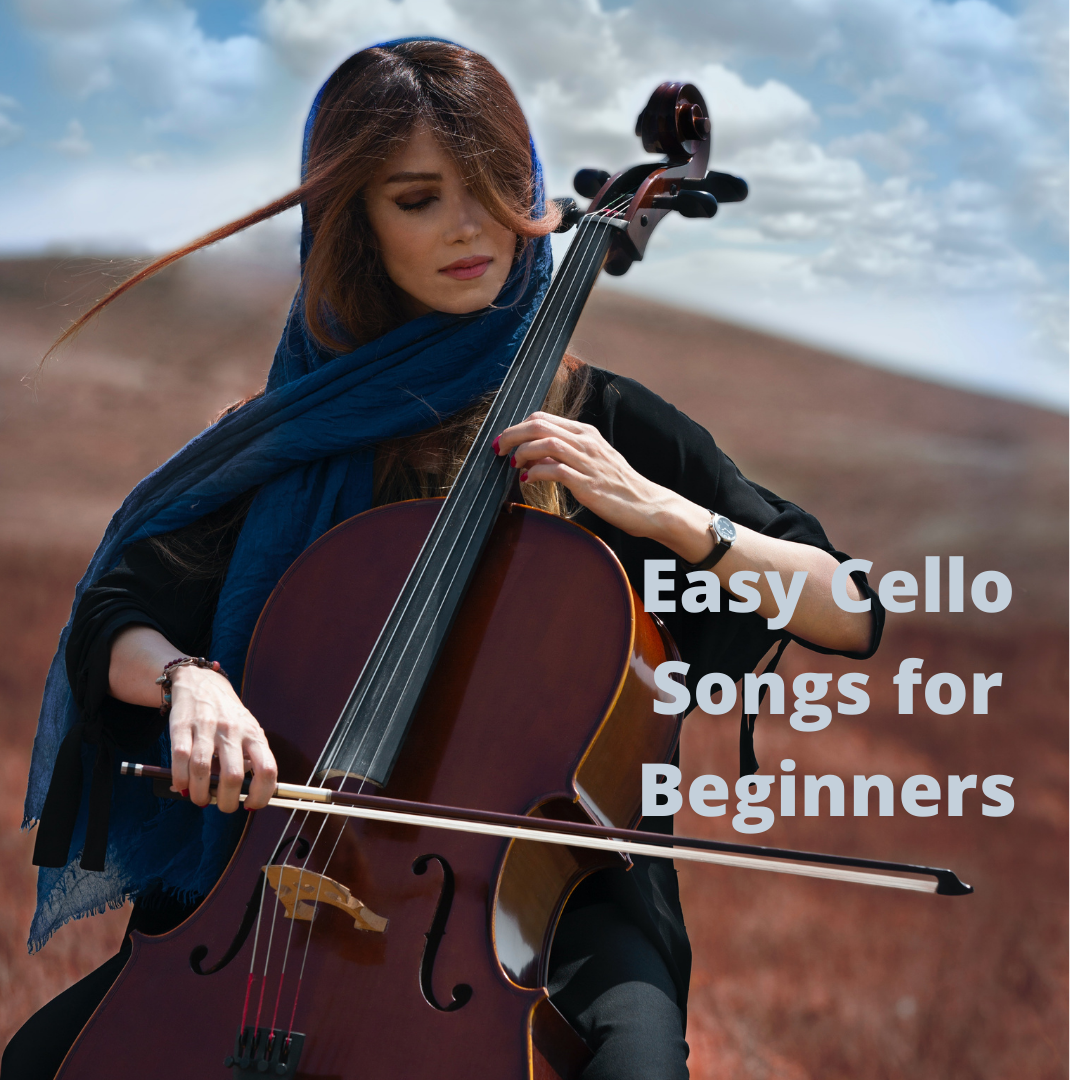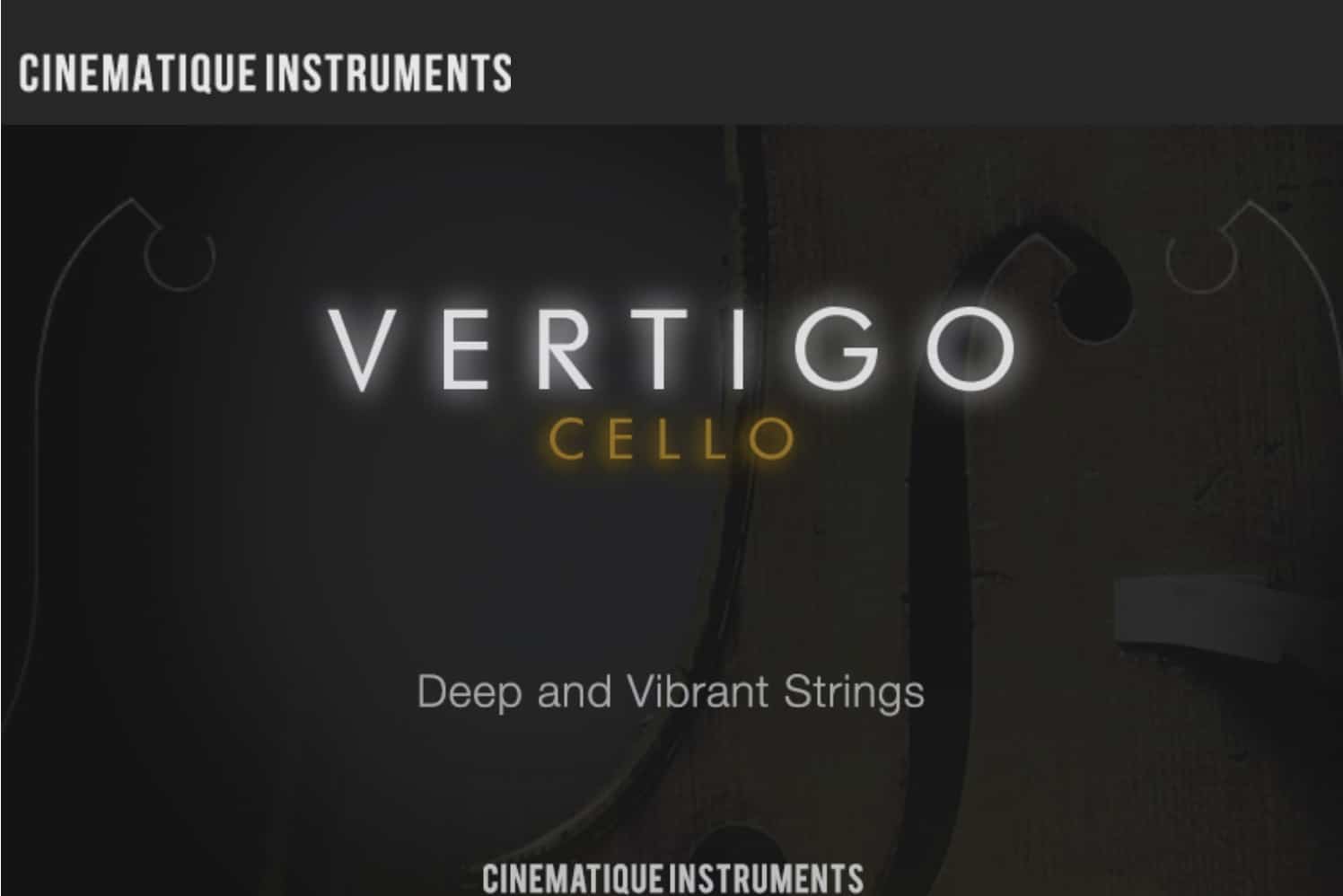Cello
What is the Highest Note You Can Play on Cello

What is the Highest Note You Can Play on Cello
What is the highest note you can play on cello! For this video I decided to push the limit on my instrument, because I had never actually tested what the highest note I could get to “speak” is.
As it turns out, it’s an E, very very high up! In daily cello playing, you are unlikely to encounter notes nearly that high, however the upper range of the cello is often pushed by compositions, and it is a very useful skill to be able to “shift” up in position to access those higher notes.
We will discuss the concept of shifting in greater detail in another video (and have touched upon it in our first position video), but basically since you only have four playing fingers, it is necessary to be able to be able to move which note your first finger lies on.
Locking these different positions into your “muscle memory,” and also the motion of the shift between them, is an essential part of practice, otherwise you will never hit these other notes satisfactorily.
The good news is that no position is intrinsically easier than any other, so start by experimenting with these higher notes from the beginning, and you’ll be well on your way to mastering the whole fingerboard.
Another interesting topic touched upon in this video is that of harmonics, and of artificial harmonics. Harmonics make use of the overtone series, an intrinsic part of every musical note that is not a pure sine wave.
Basically every pitch you hear an instrument play contains not only the main pitch you hear, but also higher notes in a predictable, mathematical series.
The density, intensity, and relative volumes of these overtone notes determines the tone and sound of the instrument, and is the reason why the same note sounds different on cello versus piano.
Because the overtones occur at mathematical ratios, we can lightly touch a string at exact divisions, and skip the fundamental note and just let the overtone speak.
This is called a harmonic. If you touch the string exactly halfway up, for instance, a note an octave up will sound.
This is because using the harmonic splits the string into two, and you can even see the string vibrate independently on either side of your finger, if you try this on a low string.
Artificial harmonics are a specialized tool of string instruments, in which you place a finger firmly in the string, typically thumb on cello, and then touch a harmonic up a quarter of the remainder of the string, so that a note two octaves above the fingered pitch sounds.
If this stuff sounds a bit confusing, don’t worry! Most harmonics are very practically notated, and the theory really only comes in with composition and for a deeper understanding of the vibrations occurring.
It is not necessary at the beginning stage to fully grasp the concept, and the basic components are readily available.
One might ask: are there different limits to the highest note if the instrument is different? And the answer is probably yes.
Different cellos may have slight differences that mean a higher or lower top note might speak compared to my cello. Also the cello bow, rosin, strings, and even temperature can play a role.
This is why cello is typically thought of as having an artificial cap on how high you can play: it is a variable between cellos and cellists. In addition, the higher you go, the closer the notes, so there is a greater technical challenge in dexterity higher up on the instrument compared to lower.
We hope you enjoyed this video on the topic. Luckily, we make it easy for you to learn cello here at Consordini.
We have videos on a variety of cello topics, including holding the cello bow, basic cello posture, beginning cello repertoire, first position on cello. Hopefully, we make it easy to get going with all the information of a trained professional.
Cello
Easy Cello Songs for Beginners: Fun and Simple Tunes to Start With

Are you a beginner cellist? Are you looking for easy cello songs to learn and play? If so, you have come to the right place! This blog post will discuss some fun and simple tunes that are perfect for beginners. These songs are easy to learn, and they sound great when played on the cello.
As you progress in your cello career, you will eventually look back on the pieces that you first played. I think it is important to keep those pieces alive in your repertoire for fun and for learning. It is amazing what you can learn from going back and playing some of the first pieces you ever played on cello.
The first pieces that you learn can teach you a lot about music and the cello, and they can also be a lot of fun to play. If you keep them in your repertoire, you can always go back and revisit them whenever you want.
So if you’re ready to start learning some new music, read on for our list of easy cello songs for beginners!
French Folk Song And English Folk Songs
If you are a fan of cello pieces from across the ocean, you may want to check out French folk songs and English folk songs. While both genres have their own unique flavor, they share a common love of melody and harmony.
French folk songs often have a light, airy feel, while English folk song tend to be more driving and energetic. However, both types of music are incredibly beautiful, and each has its own loyal following of fans. No matter which style you prefer, there is sure to be a cello great piece from across the ocean that will capture your heart.
One of the most exciting things about learning an instrument is choosing a repertoire of songs to learn. It is very important that we choose something that we enjoy playing because that will give us the motivation to continue practicing and improving our skill. If it is a melody or famous song that we already know, it will be easier for us to overcome problems in the beginning and it will speed up the process of learning.
However, we should also challenge ourselves by picking songs that are slightly out of our comfort zone. This way, we can still enjoy the process of learning while also pushing ourselves to improve. Ultimately, the most important thing is to have fun while playing the instrument. If we enjoy what we are doing, then we are more likely to stick with it and continue making progress.
Practice Playing with Others
Playing music with friends is a great way to practice playing with others, especially if you are new to the cello. The cello is easy to learn and consists of a series of eight tones that are repeated throughout the composition. This makes it a great choice for quartet playing. When you have friends with whom you can play in a quartet, you can practice playing together and get better at reading sheet music and playing together.
You can also learn new pieces together and share your love of music. Quartet playing is a great opportunity to practice playing with others and to improve your skills as a cellist.
Play in A String Quartet
As any string musician knows, playing in a quartet can be a truly enjoyable experience. The interplay between the four instruments creates a unique and pleasant sound that is perfect for a variety of occasions.
When you feel more confident with this piece, you can play the string quartet version with other string musicians, which makes it even more enjoyable. In addition, quartets are often able to book gigs more easily than solo musicians, so playing in a quartet can also be a great way to earn some extra income.

Whether you’re looking to improve your musical skills or simply want to enjoy the companionship of other string musicians, playing in a quartet is definitely an option worth considering.
Songs for Cello
I enjoy playing cello songs because of the way the music flows and how it sounds. The cello has a unique sound that can be soothing or melancholy, depending on the song. I also enjoy the challenge of trying to play songs that are technically difficult.
It can be very satisfying to finally nail a tricky passage after days or weeks of practice. Whether I’m playing a simple folk tune or a complex classical piece, I always enjoy exploring the different sounds that the cello can create.
Twinkle Twinkle Little Star
“Twinkle Twinkle Little Star” is a classic tune that is recognizable and easy to play. It’s a great song to start with if you’re just learning how to play the cello. The song is in the key of C, so it’s a good choice for beginners. The melody is simple and easy to follow, and there are only a few chords, it is an easy cello song.
If you’re just starting out, you can learn the melody first and then add the chords later. Once you’ve mastered the basics, you can add your own embellishments to the song. You can also try playing it in other keys. With a little practice, you’ll be able to play “Twinkle Twinkle Little Star” like a pro.
Ode to Joy
“Ode to Joy” is a classic choice for intermediate cellists. It’s slightly more difficult than the previous two songs, but it’s still a great choice for beginners. This well-known classical tune is perfect for intermediate-level cellists. “Ode to Joy” is a great choice for beginners who are looking for something a little more challenging. Get started today and see how far you can go!
Mary Had A Little Lamb
Another easy tune for beginners is “Mary Had a Little Lamb.” This well-known children’s song is perfect for cellists of all ages. It’s simple and easy to learn, and it’s a great way to practice basic note reading. The song starts with a single note, which is then followed by a series of descending notes. This pattern then repeats itself, making it easy to remember. In addition, the melody is relatively straightforward, so cellists will be able to focus on playing with a smooth and even tone. With a little practice, “Mary Had a Little Lamb” will quickly become one of your favorite songs to play.
Gounod – Ave Maria
The “Gounod Ave Maria” is a beautiful classical tune that is perfect for intermediate level cellists. It is slightly more difficult than the previous songs, but it is still a great choice for beginners. The song is named after the composer, Charles Gounod, and it was inspired by the Bach/Gounod Ave Maria.
The piece is in waltz time, and it features a lovely melody that is perfect for cellists of all levels. If you are looking for a great challenge, this piece is definitely worth considering. With its beautiful melody and gorgeous sound, the “Gounod Ave Maria” is sure to please cellists of all levels.
Silent night
Silent night, holy night, all is calm, all is bright. These words, written by the young priest of St. Nicholas Church in Salzburg, have been translated into 140 languages and sung by people all over the world. The song has been credited with helping to end World War I, and it remains one of the most popular Christmas carols today. The simple beauty of the melody and lyrics makes it a timeless classic that is sure to be enjoyed by generations to come.
Beethoven – Für Elise
Für Elise is one of Beethoven’s most popular compositions. The piece was originally composed for piano but has since been adapted for other instruments, including the cello. For cello beginners, the piece provides a simple yet elegant introduction to Beethoven’s musical world.
The piece is also a great choice for more experienced cellists, as it showcases Beethoven’s mastery of melody and harmony. The composition is dedicated to Therese Malfatti, the woman whom Beethoven married in 1810. Almost 100 years after its composition, Fur Elise continues to be one of the most popular pieces in the classical repertoire.
Amazing Grace – John Newton
Amazing Grace is a beautiful piece of music that allows for exploration of emotion and longer bowing. It is technically in the major C major but there’s no issue with unusual fingering throughout the pieces because you can use a third-hand open string, the fourth finger, or the first finger.
Keep listening to your fourth fingers and check that you’re in tune! Its time signature is 3/4 and starts with three beats in front of your first measure. This piece is a little difficult but is definitely worth learning. It will be a great addition to your repertoire.
“Largo,” From The New World Symphony (Dvorak)
The “Largo” from Antonin Dvorak’s “New World Symphony” is one of the most popular and beloved pieces of classical music ever written. Featuring a slow and peaceful melody, the piece has been used in countless films, commercials, and radio stations over the years.
Despite its popularity, the piece is actually quite simple, making it an ideal choice for beginner cellists. However, even experienced players can enjoy the piece by learning the string quartet version, which features the cello prominently. No matter how you choose to enjoy it, the “Largo” from the “New World Symphony” is sure to be a timeless classic.
Pachelbel – Pachelbel’s Canon
Pachelbel’s Canon is one of the most recognizable pieces of classical music ever written. Originally composed for three violins and basso continuo, it has been adapted for a wide variety of instrumental combinations over the years. Today, it is most commonly performed by a string quartet.
The piece is built around a simple ground bass, which is repeated continuously throughout its duration. This gives the Canon a feeling of calm and serenity, despite the ever-changing melodic line above it. The piece is perfect for both beginner and advanced musicians alike and is sure to provide hours of enjoyment. So grab your friends and instruments, and get ready to experience the beauty of Pachelbel’s Canon.
We wish you a very Merry Christmas
The Christmas season is a time for joy, goodwill, and merriment. It’s a time to be with family and friends, to exchange gifts, and celebrate the birth of Christ. And what better way to celebrate than by singing Christmas carols? “We Wish You a Merry Christmas” is a popular Christmas carol that has been enjoyed by people of all ages for generations.
The catchy melody and joyful lyrics make it the perfect song to get everyone in the holiday spirit. So this Christmas, make sure to include “We Wish You a Merry Christmas” in your holiday repertoire. Who knows, you might just start a new tradition!
Read Cello Sheet Music for Beginners
Reading cello sheet music is not as difficult as it might first appear. The key is to take things one step at a time and to practice regularly. Start by familiarizing yourself with the different symbols used in cello notation.
The clef, which looks like a spiral staircase, indicates the pitch of the notes on the staff. The notes themselves are represented by different characters, and you will also see sharps and flats, which tell you whether a note should be played sharp or flat. In addition, there are some basic rules of thumb that can help you to read cello sheet music more easily. For example, Remember that the lower the note is on the staff, the lower the pitch will be.
Also, keep in mind that notes on the same string are usually played with the same finger, so look for patterns in the fingering as you read. With a little practice, you’ll be reading cello sheet music like a pro in no time!
There are a number of places you can get free cello sheet music. The best place to start is by searching the internet. There are many websites that offer free sheet music, and you should be able to find what you’re looking for with a little bit of searching.
You can also check out your local library or music store, as they may have some free sheet music available. Finally, you can always ask a teacher or fellow cellist for help. They may know of a good resource that you haven’t thought of. Whatever you do, don’t be afraid to ask for help! Learning to play the cello can be a challenge, but it’s also incredibly rewarding.
Easy Cello Songs for Beginners FAQ
What songs can you play on cello?
There are a wide variety of songs that can be played on the cello, ranging from classical pieces to popular Christmas carols. Some easy cello songs for beginners include “Für Elise” by Ludwig van Beethoven, “Amazing Grace” by John Newton, and “Largo” from Antonin Dvorak’s “New World Symphony.”
What is the best way to learn cello songs?
The best way to learn cello songs is to practice regularly and listen to music as often as possible. It is also helpful to find a teacher or tutor who can help you with your technique and offer feedback on your progress.
What is the easiest song to play on the cello?
One of the easiest songs to play on the cello is “Amazing Grace” by John Newton. This piece is perfect for beginners because it uses simple chords and has a slow, steady tempo.
Are there any easy Christmas songs for cello?
Yes! Some easy Christmas songs for cello include “We Wish You a Merry Christmas,” “Jingle Bells,” and “Silent Night.” These pieces are perfect for getting everyone in the holiday spirit.
What are some other easy cello songs?
Other easy cello songs include “Ave Maria” by Franz Schubert, “Bridal Chorus” from Lohengrin by Richard Wagner, and “Canon in D” by Johann Pachelbel. These pieces are perfect for both beginner and experienced cellists alike.
What is the most famous cello piece?
The first Suite features the Prelude, which is one of the most well-known cello compositions.
What should I play on the cello?
First and foremost, you should play music that you enjoy. If you’re not enjoying the music, it will be difficult to stay motivated and practice regularly. There are many different types of cello music to choose from, so take some time to explore different genres and find what you like best.
What is the easiest song to play on cello?
The easiest song to play on cello is “Twinkle Twinkle Little Star.” This classic children’s song only uses a few notes, which makes it perfect for beginning cellists. The melody is also easy to remember, so cellists can focus on learning the proper technique. In addition, “Twinkle Twinkle Little Star” can be played at a slow tempo, making it easier to keep up with the music. As a result, this simple song is an excellent choice for cellists who are just starting out.
What is the hardest song to play on cello?
When it comes to cello music, there are a few songs that stand out as being particularly challenging. One of the most difficult is the “Bach Suite No. 1 in G Major.” The suite is composed of six movements, each of which requires a high level of skill and precision. Another difficult cello piece is “Concerto in B Minor” by Antonio Vivaldi. This concerto is also composed of six movements, and it features a number of complex passages. Many cellists consider these two pieces to be the hardest songs to play on cello. However, there are a number of other difficult pieces that are worth mentioning. These include the “Paganini Caprice No. 24” and the “Concerto in A Minor” by Johann Sebastian Bach. While these pieces may not be as well-known as the Bach suite or the Vivaldi concerto, they are still incredibly challenging and require a great deal of skill to play well.
What is a famous piece of music played on the cello?
The cello is a powerful and expressive instrument, capable of conveying a wide range of emotions. One of the most famous pieces of music written for the cello is the “Piano Concerto in A Minor” by Edvard Grieg. First performed in 1869, the concerto is one of the most popular works in the cello repertoire. The piece is known for its lyrical melodies and dramatic climaxes, which showcase the cello’s wide range of sound and dynamics. The concerto has been recorded by many world-renowned cellists, including Jacqueline du Pré and Yo-Yo Ma. It remains one of the most popular pieces of classical music, and is sure to delight listeners of all ages.
What is the most popular cello piece?
Although there are many great cello pieces, the most popular ones tend to be those that are both technically challenging and emotionally moving. Brahms’ “Cello Sonata No. 1 in E minor” is a perfect example of this combination. The first movement, in particular, is full of yearning and melancholy, while the second movement contains some of the most difficult cello passages ever written. Another popular cello piece is Dvorak’s “Cello Concerto in B minor.” Like the Brahms sonata, this work is both technically demanding and deeply moving. The slow second movement is particularly beautiful, with its lyrical melodies and soaring inner voices. These two pieces are just a few examples of the many great works that have been written for the cello. While there are many different interpretations of what makes a piece of music great, there is no doubt that the cello repertoire contains some of the most beautiful and emotionally powerful music ever written.
How do you read cello sheet music for beginners?
If you’re just starting out, reading cello sheet music can seem daunting. However, there are a few things you can do to make it easier. First, take some time to familiarize yourself with the basic symbols and notation used in cello music. Once you understand the basics, try practicing sight-reading by playing simple melodies from cello music books or online. After you’ve had some practice, you’ll be able to sight-read cello sheet music with relative ease. If you find yourself struggling, don’t hesitate to ask a teacher or fellow cellist for help. With a little practice, you’ll be reading cello sheet music like a pro in no time!
What songs can you play on a cello?
The cello is a versatile instrument that can be used to play a wide variety of music. From classical to pop, the cello has something to offer every musician.
Is a cello good for beginner?
The cello is a great instrument for beginners. It is relatively easy to learn the basics, and there is a wide variety of music that can be played on the cello. If you are thinking about learning to play the cello, I would highly recommend it!
What is the hardest piece for cello?
There are many difficult pieces that can be played on the cello. Some of the most difficult include the “Paganini Caprice No. 24” and the “Concerto in A Minor” by Johann Sebastian Bach. While these pieces may not be as well-known as the Bach suite or the Vivaldi concerto, they are still technically challenging and require a great deal of skill to play well. If you are up for the challenge, I would encourage you to try one of these pieces. You may be surprised at what you can achieve!
Where can I get free cello sheets?
Music is a universal language that can bring people together regardless of their background or culture. For many, learning to play an instrument is a lifelong passion that brings joy and satisfaction.
The cello is a particularly popular choice, thanks to its rich and emotional sound. If you’re interested in learning to play the cello, you’ll need access to sheet music. While you can purchase cello sheets from a music store or online retailer, there are also a number of websites that offer free cello sheets.
Many of these websites are run by passionate musicians who want to share their love of music with others. So whether you’re just starting out or you’re looking for new pieces to add to your repertoire, be sure to check out these free resources for cello sheet music.
Can you use piano sheet music for cello?
The bass clef from piano sheet music can be played by instruments such as the bass guitar, cello, baritone saxophone, and bassoon.
Is it hard to learn to play the cello?
Cello is one of the most challenging instruments to learn for a number of reasons. First, it is a very physically demanding instrument. You need to have a lot of upper body strength to be able to hold it correctly, and you need good hand-eye coordination to be able to play the strings properly.
Virtual Instrument Library
Cinematique Instruments Releases Vertigo Cello

Vertigo Cello by Cinematique Instruments
Cinematique Instruments continued with Vertigo Cello the Vertigo family. Vertigo Cello is a melange of 15 finely and thoroughly picked articulations of the cello. All of these playing techniques can be freely mixed and individually tuned, enabling your vision of cello sound in an intuitive and simple way. The overall sound of Vertigo Cello is characterized by a deep and vibrant string mood with an organic character.

Vertigo Cello has many different and interesting sound sources. Besides the well-known Sustained Notes available as Solo and Cello Trio in three velocity layer, Cinematique Instruments have paid special attention to select special as well as unique playing techniques. Here is to mention Cinematique Instruments’ special articulation called ‘Fragile’, which plays the cello absolutely quiet – at the edge of atonal bow scratching. This creates an impressive liveliness, which gives the cello a special touch, especially when mixed with other articulations. Cinematique Instruments also played the cello with circular movement (‘Circular’), also recorded harmonics, sul ponto and evolving articulations in two different variations.
Vertigo Cello is rounded off by 2 resynthesized sound sources – here Cinematique Instruments put the cello through some modules like tap delay, granular effects and special resynthesizer and created interesting textures. All these sources come together to form the beautiful, rich and organic sound that is Vertigo String Ensemble.
In summary, the main principle of Vertigo Cello is the use of 15 different cello articulations that can be individually mixed, pitched, and paned. In the master section, you find very interesting tools, such as taped and spin speakers, with which you can create absolutely unique Cinematique Instruments intense and concise string sounds.
Vertigo Cello is packed with an electrifying range of many different appealing articulations of a solo cello as well as playing techniques of a trio. Vertigo Cello convinces with the ability – just like the other Vertigo instruments – to create organic and unique string moods as well as special organic soundscapes in an instant – all within the tonal spectrum of a cello. In addition, of course, you can also play legato sounds full of character.

Vertigo Cello provides 15 different sound sources
Sustained Cello, Fragile, Sul Pont (all played with one solo Cello as well as Cello trio), Circular, Harmonic, Evoloving Random Bowed in two variations 1+2, Soft- and Hard Tremolo (all played with one solo Cello), Cloud Cello (Cello ran through several modular tools), Resynthesized, Bowed (three cello bwoing) and Leap (random spiccato)
Pricing and Availability
Vertigo Cello is available now.
Cello
Cello Tutorial – Wolf Tone Eliminator

Cello Wolf Tone Eliminator
A “wolf tone” is a naturally occurring acoustic phenomenon where the sympathetic resonance of overtones clashes. This is a result partly of equal temperament, the preferred system of tuning in the modern world in which every note is as equally in tune as out of tune.
In practice, this makes fifths not the perfect 3:2 ratio of Pythagoras, but a little flat. So on the cello, we find the problem to be the middle F, especially when played on the G string.
The reason is that the F major chord has notes that are open strings. The F tries simultaneously to resonate with the major third A string, and also the perfect fifth C string (though down two octaves).
This instability caused by imperfect equal tempered tuning creates an ugly, pulsating, unstable wolf tone. And that’s the problem this product tries to address.
The topic of improving cello sound, tone, and playability is a relatively recent field, at least when compared to innovations for piano and violin. Cello has always been bit of a straggler.
While it is well revered as a great solo instrument today, for a while it was merely a “bass,” and similar assumptions were made about how to play it as violin.
For example the left hand used to be angled like a violinist’s hand would be, and there was no endpin originally, just holding the cello between the players knees.
Over time, gut strings were also replaced by steel strings, and these innovations alone have had tremendous implications for the instruments playability, dexterity, intonation, tone, and canvas of extended techniques possible.
Even so, we are in many ways still in the infant stages of all sorts of both electronic and acoustic tone solutions for the cello.
Of course we hope to see more cello repertoire written, more great players emerge, and to have cello reach an ever more prominent stage. As we go down that path, sometimes it’s in trying new toys and gadgets that help.
So, is this a good product for you?
If you’re just starting out, don’t worry too much. Sometimes these things can be overwhelming, especially when faced with all the other more normal aspects of playing cello, which are already daunting.
It is, however, something to keep in mind exists, so that you don’t have to struggle through when there is a solution to a problem when it presents itself. Hopefully, we feel all our videos delivered a balanced and informative take. We don’t care what you buy, we just care that you learn!
Playing the cello is far from a trivial pursuit, but it is also an immensely rewarding experience and a lifelong set of ambitions and goals.
As a professional cellist based around Los Angeles and Southern California, I’m here to help you learn how to play cello.
From playing in orchestras, traveling to Europe to premiere new works, recording on film scores here in LA and performing privately around SoCal, we try to package my experience with cello to help you accomplish your goals.
There’s no doubt that once you pick up a cello you’ll never want to put it back down. There’s a certain thrill that comes with being a musician.
People don’t understand what an emotional, sometimes wild experience playing music can be. It will enrich every aspect of your life. Don’t be intimidated by the process of starting from scratch, every artist has to earn their abilities.
If we haven’t managed to convinced you to pick up the cello, nobody can.
So what are you waiting for? Don’t worry about buying an expensive instrument from the start – there are endless resources for renting instruments no matter where you live.
We suggest finding a rental and once you get serious consider buying your own. There’s nothing like the bond you have with your cello!
Let us know if this video helped! We’ve been making cello lesson videos for a few months now, and there are over a dozen lessons to help you learn this wonderful instrument.
It can be challenging, but a most helpful and rewarding experience. Justin Lepard is your cello teacher. He is an accomplished cellist in LA, playing with a wide variety of musical groups and having solos in many films including Togo on Disney+ and The Invisible Man.
-

 Vetted2 months ago
Vetted2 months ago11 Best Gore Websites to Explore the Darker Side of the Internet
-

 Music Theory2 weeks ago
Music Theory2 weeks agoUnlocking Nature’s Harmony: The Power of 432 Hz Frequency in Sound & Music for Enhanced Living and Well-Being
-

 Vetted1 month ago
Vetted1 month ago15 Best Commercial Vacuum Cleaners for Heavy-Duty Cleaning Jobs
-

 Vetted2 months ago
Vetted2 months ago15 Best Essential Oils Brands to Elevate Your Aromatherapy Experience
-

 Sound Design2 weeks ago
Sound Design2 weeks agoWhat Is the Difference Between a Sound Engineer and A Sound Designer?
-

 Native Instruments Kontakt2 weeks ago
Native Instruments Kontakt2 weeks agoVOCAL AI – Animated Intelligence: The Ultimate Vocal Playground
-

 Sound Design2 weeks ago
Sound Design2 weeks agoWhy Sound Engineer
-

 Vetted2 months ago
Vetted2 months ago15 Best Concrete Sealers for Ultimate Protection and Longevity










